Biography vs autobiography — two genres that share similarities yet have distinct differences in their approach to portraying the lives of individuals. A biography is a written account of a person’s life, highlighting key events, experiences and achievements. It typically provides a chronological narrative, offering insights into the individual’s character, contributions and the context of their life. In contrast, an autobiography is a written account of a person’s own life written by that individual. Unlike a biography, an autobiography is a first-hand narrative where the subject reflects on their own experiences, memories and perspectives.
- Biography: Key characteristics
- Bestselling biographies examples
- Autobiography: Key characteristics
- Bestselling autobiographies examples
- Biography vs autobiography: Similarities
- Biography vs autobiography: Differences
- Biography vs autobiography: How to prepare them for editing?
Biography: Key characteristics
Overall, biographies aim to provide readers with an informative and engaging portrait of a person’s life, contributing to a better understanding of historical figures, influential personalities or individuals who have significantly impacted society.
The key characteristics of a biography as a genre include:
- Chronological account: Biographies typically present a chronological narrative of the subject’s life, organising events and experiences in the order in which they occurred.
- Factual information: Biographies aim to provide accurate and factual information about the subject, supported by thorough research and verification of details.
- Objective perspective: While biographers strive for objectivity, the interpretation of events can vary. However, the goal is to present a balanced and fair portrayal of the subject.
- Contextualisation: Biographies often place the subject’s life within the broader historical, cultural or social context, helping readers understand the influences that shaped the individual.
- Insight into character: A good biography delves into the subject’s character, motivations and personality, offering readers a deeper understanding of the individual beyond mere facts.
- In-depth research: Biographers conduct extensive research, relying on personal documents, interviews, letters and historical records to compile a comprehensive account.
- Authenticity: Biographies strive to convey the authentic voice and essence of the subject, capturing their uniqueness and the complexity of their life.
- Critical evaluation: Some biographies include critical analysis and interpretation, discussing the impact of the subject’s actions and contributions on their time and subsequent generations.
10 bestselling biographies worth reading
- Alan Turing: The Enigma by Andrew Hodges explores Turing’s contributions to computer science and his tragic life.
- Elon Musk by Ashlee Vance offers insights into the entrepreneur’s ambitious ventures.
- Frida by Hayden Herrera unravels the tumultuous life of the iconic Mexican artist Frida Kahlo.
- Hamilton by Ron Chernow delves into the life of America’s Founding Father.
- Malcolm X by Manning Marable offers a new perspective on the influential civil rights leader.
- Steve Jobs by Walter Isaacson is a comprehensive biography of Apple co-founder, providing insights into his leadership and innovations.
- The Lost City of Z by David Grann conveys explorer Percy Fawcett’s quest for a mythical ancient city in the Amazon.
- The Queen: A Life in Brief by Robert Lacey chronicles the reign of Queen Elizabeth II and the changing dynamics of the British monarchy.
- The Revenant by Michael Punke is the true story of frontiersman Hugh Glass, who survived a grizzly bear attack in the American wilderness during the 1820s.
- Unbroken by Laura Hillenbrand is based on the incredible true story of Louis Zamperini, an Olympic athlete turned World War II bombardier who survived Japanese prison camps.
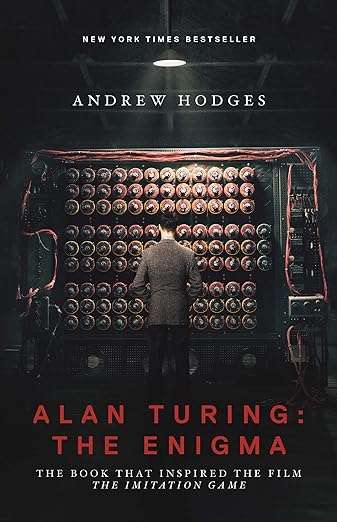
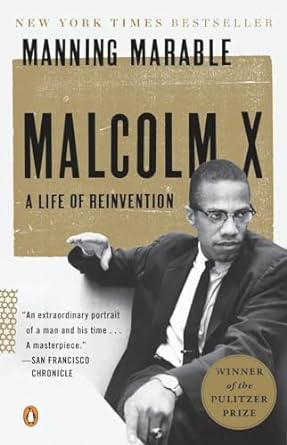
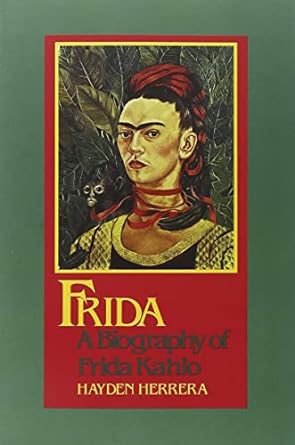
Autobiography: Key characteristics
Autobiographies provide readers with a first-hand account of an individual’s life, allowing for a unique and personal exploration of the author’s experiences, challenges and triumphs.
The key characteristics of autobiography as a genre include:
- First-person perspective: Autobiographies are written in the first person, with the author recounting their own experiences, thoughts and emotions, offering a direct and personal account of their life.
- Subjective interpretation: Autobiographies reflect the author’s subjective viewpoint, providing insights into their perceptions, feelings and reflections on various life events.
- Intimate and personal: Autobiographies often delve into personal details, emotions and private moments, creating a more intimate connection between the author and the reader.
- Reflective tone: Authors of autobiographies often engage in self-reflection, analysing the significance of their experiences and the lessons learned throughout their life journey.
- Emphasis on personal growth: Autobiographies frequently explore the author’s personal development, highlighting moments of growth, change and self-discovery throughout their life.
- Selective memory: Authors may emphasise specific events, memories or themes in their life, shaping the narrative according to their perspective and priorities.
- Narrative structure: Autobiographies may follow a chronological order, but some authors opt for a thematic or episodic structure, organising the narrative around key themes or significant life events.
- Purposeful storytelling: Autobiographers often have a purpose or message they wish to convey: to inspire, educate or share a unique perspective. The storytelling is often purposeful and shaped by the author’s intentions.
- Authentic voice: Autobiographies aim to capture the author’s authentic voice, allowing readers to connect with the narrator on a personal level and gain a deeper understanding of their individuality.
- Integrity and truthfulness: While autobiographies are subjective, readers expect honesty and truthfulness from the author, even if the narrative is shaped by personal interpretation.
10 bestselling autobiographies worth reading
- Being Henry by Henry Winkler shares the disheartening truth of Happy Days, Arrested Development and Barry star’s childhood, the difficulties living with dyslexia and the pressures of a role that takes on a life of its own.
- I Know Why the Caged Bird Sings by Maya Angelou explores the poet’s early life, struggles and triumphs.
- Is This Ok? by Harriet Gibsone is a funny and honest account of trying to find a connection in the Internet age.
- Kitchen Confidential by Anthony exposes the wild tales of the culinary industry: from his lowly position as a dishwasher to cooking at some of the finest restaurants in the world, Bourdain tells it all.
- Long Walk to Freedom by Nelson Mandela is an inspiring journey from anti-apartheid activist to South Africa’s first black president.
- My Life So Far by Jane Fonda chronicles the actor’s life in Hollywood, activism and personal growth.
- Open by Andre Agassi reveals his triumphs, struggles and the personal costs of success in professional sports.
- Spare by Prince Harry exposes the experiences of the royal life in the public eye, including trauma and mental health struggles.
- The Happiest Man on Earth by Eddie Jaku is a lesson in how happiness can be found in the darkest of times, such as the author’s survival at the hands of the Nazis.
- The Story of My Experiments with Truth by Mahatma Gandhi reflects on his life, principles and role in India’s struggle for independence.
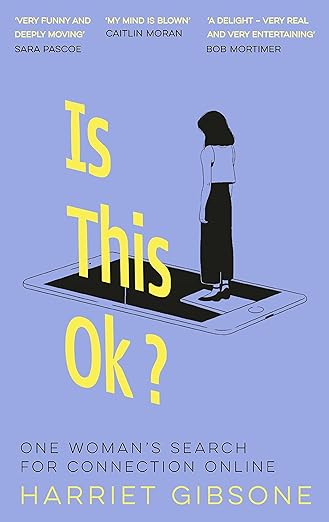
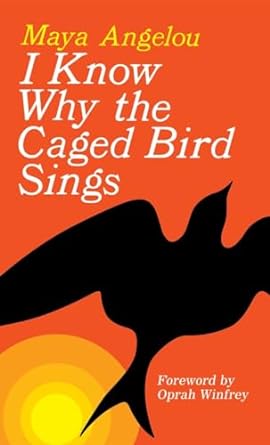
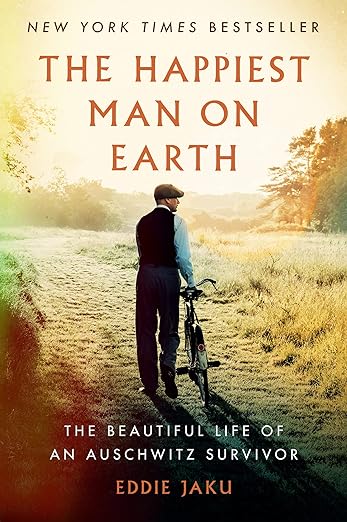
Biography vs autobiography: Similarities
Biography vs autobiography share several similarities, given that they both belong to the non-fiction genre and provide insights into the lives of individuals. Here are the main similarities:
- Non-fiction nature: Both biographies and autobiographies are forms of non-fiction literature, presenting factual information about real people and events.
- Focus on individual lives: The central theme of both genres is a specific person’s life. They aim to explore and document the subject’s experiences, achievements, challenges and personal growth.
- Narrative structure: Biographies and autobiographies typically follow a narrative structure, organising events coherently and meaningfully. The storytelling can be chronological or structured thematically.
- Character exploration: Both genres delve into the individual’s character, personality and motivations, providing readers with a more comprehensive understanding of the subject.
- Historical and cultural context: Biographies and autobiographies often place the individual’s life within a broader historical, cultural or social context. This context helps readers comprehend the influences that shaped the person and the significance of their contributions.
- Authenticity and truthfulness: Readers expect authenticity and truthfulness in both biographies and autobiographies. While the author’s perspective may influence the interpretation of events, there is an underlying expectation of factual accuracy.
- Reflection on life events: Like memoirs, both genres may involve reflection on significant life events, personal growth and the impact of various experiences on the individual.
- In-depth research: Authors of biographies and autobiographies often conduct extensive research to gather information from various sources, ensuring a comprehensive and well-informed portrayal of the subject’s life.
Despite these similarities, a key distinction is the writing perspective. A biography is typically written by someone other than the subject, offering an external viewpoint. On the other hand, an autobiography is self-written, providing a first-hand account of the author’s life.
Biography vs autobiography: Differences
The differences between biography vs autobiography highlight the distinct characteristics and approaches of biography and autobiography as literary genres:
Authorship
- Biography is written by an external author who researches and compiles information about the subject.
- Autobiography is written by the subject of the narrative, providing a first-hand account.
Perspective
- Biography presents an external, third-person perspective on the subject’s life.
- Autobiography offers a first-person perspective, allowing the author to share personal thoughts and experiences directly.
Objective vs subjective
- Biographies aim for objectivity, presenting a balanced and factual account.
- Autobiographies are inherently subjective, allowing the author’s interpretation and emotions to shape the narrative.
Point of view
- Biographies are written from an outsider’s viewpoint, relying on research and interviews.
- Autobiographies are written from the author’s own viewpoint, providing an intimate and personal narrative.
Tone
- Biographies maintain an objective tone, avoiding personal bias or emotional involvement.
- Autobiographies may exhibit a more emotional and personal tone, reflecting the author’s subjective experiences.
Research method
- Biographers conduct external research, relying on various sources beyond the subject’s personal accounts.
- Autobiographers draw on personal experiences, memories and reflections without relying on external research to the same extent.
Comprehensive coverage
- Unlike memoirs, biographies often cover various aspects of the subject’s life, including personal, professional and public dimensions.
- Autobiographies may focus on specific themes or periods, offering a more selective exploration of the author’s life.
Intended audience
- Biographies cater to a broad audience interested in learning about significant individuals.
- Autobiographies appeal to readers seeking a personal and intimate connection with the author’s life.
Narrative control
- Biographers control the narrative and interpretation of the subject’s life.
- Autobiographers have complete control over how their own life story is presented.
Biography vs autobiography: How can editing services prepare them for publication?
Editing services are crucial in preparing biographies and autobiographies for publication, ensuring the manuscript is well-structured and effectively communicates the author’s story. Here are different types of editing services and how they contribute to the publication process:
Developmental editing
- Focus: Examining the overall structure and content.
- Goal: Identifying areas that need improvement regarding organisation, clarity and coherence.
- Result: Ensuring that the narrative flows logically, character development is robust, and key events are effectively portrayed.
Line editing
- Focus: Polishing the manuscript line by line.
- Goal: Addressing style, tone and language issues to improve overall writing quality.
- Result: Enhancing the author’s writing style, making it more consistent and compelling.
Copyediting
- Focus: Correcting grammar, punctuation and spelling errors.
- Goal: Ensuring the manuscript adheres to language conventions and is free from technical errors.
- Result: Ensuring the professional presentation of the text and minimising distractions caused by grammatical mistakes.
Fact-checking
- Focus: Verifying the accuracy of information presented in the manuscript.
- Goal: Ensuring that names, dates, events and other details are correct and consistent.
- Result: Guarantying the reliability of the information presented and maintaining the integrity of the narrative.
Proofreading
- Focus: Reviewing the final version for typos and minor errors.
- Goal: Providing a last check to catch any remaining mistakes before publication.
- Result: Ensuring a polished and error-free manuscript for the final stages of production.
Formatting
- Focus: Ensuring the visual presentation of the text.
- Goal: Formatting the manuscript for consistency and preparing it for publication.
- Result: Creating a professional and visually appealing layout, optimising the reading experience.
Indexing
- Focus: Creating an index for easy reference.
- Goal: Compiling an organised index of names, events and topics mentioned in the biography.
- Result: Enhancing the usability of the biography as a reference tool.
Final thoughts
In conclusion, although biography vs autobiography offer unique perspectives on the lives of individuals, they differ in their approach and style. A biography provides an objective and informative account of a person’s life. On the other hand, an autobiography offers a subjective and personal exploration of the author’s experiences. In sum, biography vs autobiography — each genre has its strengths and limitations.
Moreover, professional editing services, including developmental, line, copyediting and proofreading, play a vital role in preparing these genres for publication. The editing process ensures coherence, readability and accuracy, allowing biographies and autobiographies to connect with readers effectively.
Contact me for a free sample edit of your manuscript (and remember to use my early bird discount). I am an experienced editor working with non-fiction, academic and business texts. I can help prepare your text for publication, from a big-picture analysis through bringing to the fore your authorial voice to ensuring the correctness and consistency of the language.

